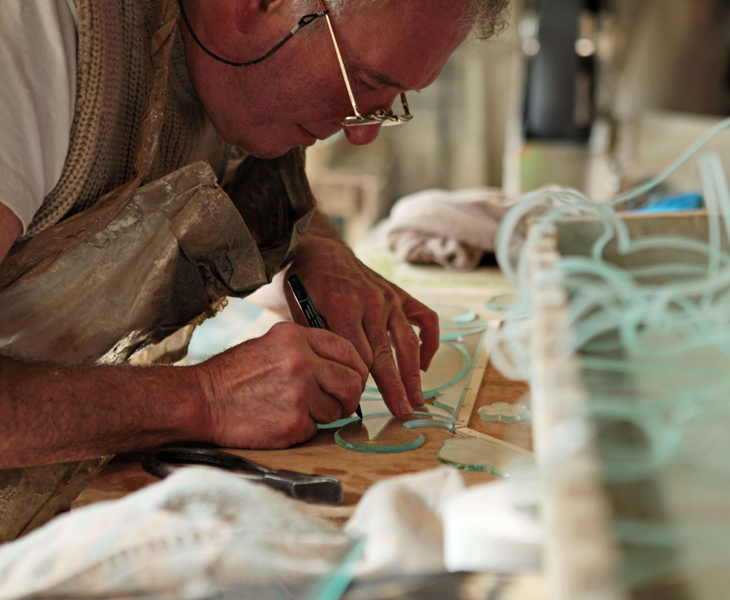Dating back to the 1st century BC in Egypt the mirrors, thanks to their splendour and their shape, were considered a symbol of life and regeneration, so much to be a direct connection with the gods in particular with the solar god. Objects of great value and refinement, already in their phase of creation receive particular care, for example, their handles took forms of deities, papyrus plants or female figures.
Arousing interest in many populations, there were different civilizations that tried to reproduce them, among them the Romans, the Germans and the inhabitants of Lorraine, however, only the latter in the 12th century developed a good handicraft mirror that saw the glass metallized with the lead and the tin.
The tradition of mirrors in Venice
The first attempts to produce a mirror in Venice date back to 1318, a process that did not go well until 1369, the year in which the first production was dated. This refined product required a high degree of craftiness, which consequently increased production costs making it an object destined for wealthy families.
The turning point came only in the mid-fifteenth century, when Angelo Barovier invented crystal, thanks to this clear and transparent glass one hundred years later, in 1540, the Venetian Vincenzo Redor patented and invented the Venetian mirror with a flat and regular surface.
From here the art of the mirror became widespread and in the 16th century the engraving with diamond points began both on them and on the glass produced on Murano. In the following century, the decorative mirrors developed and their frames were covered with lists of bevelled mirrors and lacquered wooden parts
The art of the Barbini family

Known in Murano since the middle of the 16th century for its craftiness in the creation of glass, the Barbini family in 1658 was registered, by order of Consiglio dei Dieci, in Libro d’Oro della Magnifica Comunità di Murano, a sort of collection of the nobility island glassworks.
However, in addition to glass processing, Barbini also proved to be skilled mirrors, their works dating back to the 17th century, contributed to giving more importance to the artisan quality of Murano and also to the Serenissima Republic.
The fame of the family had become such that in 1665 Gerolamo Barbini together with his brothers Marco and Domenego were taken to the Court of Luigi XIV in France to start a local production of Venetian mirrors. Gerolamo Barbini, who remained in France for a long time, collaborated at la Manufacture Royale des glaces de miroirs in the village of Saint Antonine and was also part of the team that created the Versailles Mirror Gallery.
Even the era of the production of glass and mirror experienced a crisis, this was born when:
- Many glass masters left Murano to move to the European courts flattered by the great promises of the nobles;
- With the fall of the Republic the factories increased and with them the new technologies.
The Barbini family managed to remain active even in the dark years thanks to the great capacity for reinvention and adaptation, in fact they started to produce enamels and Conterie, also working as maestri conzadori, advising the major factories of Murano.
1822 was a really important year for this family, in fact Angelo Barbini bought the Palazzo Da Mula, giving his family the name of "I Barbini di palazzo Da Mula" which saw the birth of ten children, five of whom continued the art of glass. Thus it was that the offspring of Barbini, who arrived in the 20th century, took over the secrets and techniques of the family in the production of mirrors up to the present day.
In 1929 the company was awarded with the Gold Medal of First Degree at "Esposizione Mostra Campionaria" in Florence, nowadays their works can be found in luxury hotels such as the Palazzina Grassi, Hotel Cipriani, Hotel Gritti Palace and Gran Caffè Quadri, but also in hotels and palaces around the world.










Lascia un commento